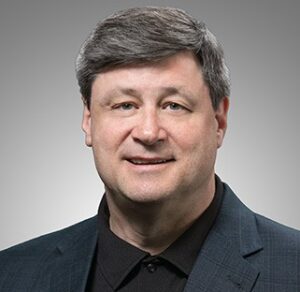Breaking the Mold to Achieve Breakthrough Performance
Brian Landrum knew Reliant Energy could do better. It was 2006, and the COO saw major opportunity within the energy provider’s wholesale business. It owned 29 gas, oil and dual-fuel plants and 11 coal-fired power plants with a collective generation capacity of about 15,000 megawatts.
Earlier that year, the Houston-based organization had collected benchmarking data indicating that the power plants were not running within the top quartile of the industry in terms of plant availability and the cost and availability of the energy they produced.
“Many organizations come up with some rationalization as to why the benchmarking data isn’t relevant to them. Reliant was doing this,” Landrum says. “That stalls progress.”
Landrum refused to look away from the problem. To improve Reliant’s performance, he set ambitious goals. After analyzing the data as well as the company’s operating capability and potential future cash flow, he determined that the value of the organization’s portfolio could improve by 20 percent, or more than $1 billion. And he set an ambitious timeline of just 18 months—from early 2007 to mid-2008—for reaching that value goal.
The initiative, called WAVE (Wholesale Asset Value Expansion), would improve the operating performance of all 40 power plants, and involve all plant operations, commercial management, fuels, finance and regulatory groups. To produce a $1 billion asset improvement, no one could be left out and no group could be overlooked.
“People thought this was just impossible, that I was just nuts suggesting this,” says Landrum, who now serves as president of Gexa Energy, an electricity and gas retailer also based in Houston. “But I don’t see the point of maintaining the status quo. I always want to find the full potential of an organization.”
A New Wave of Change

This wasn’t Landrum’s first time pushing an organization into bold new territory. Before Reliant, Landrum was general manager for an IT services company that had a negative 56 percent return on its invested capital. In just three quarters, he and his team turned that around to a positive return of 125 percent, in a business with more than $1 billion in revenue.
“I got a taste of setting a really ambitious goal to do more than anybody thought possible,” he says. “I found that incredibly satisfying.”
At Reliant, WAVE was launched on the notion of producing a “breakthrough result,” Landrum’s term for a seemingly impossible target that requires an organization’s leadership to think and act beyond the traditional.
“We didn’t know how to achieve the goal,” Landrum says. “We had a point in the future defined by time and dollars, but we didn’t know the path to get to it.” He knew that to reach the bold $1 billion portfolio valuation increase, Reliant would have to create value well above its current capacity. That meant everything about the plants’ operations would be up for discussion and change.
“The goal was transformational—to change the organization from thinking about incremental improvements and to come up with significantly better ways of operating the business,” he says.
“The goal was transformational—to change the organization from thinking about incremental improvements and to come up with significantly better ways of operating the business.”
—Brian Landrum, former COO, Reliant Energy
To get there, Landrum started by convening more than 50 Reliant leaders and managers with expertise in operational areas like finance, regulated markets, customers, pipelines, fuel storage and both coal- and gas-operated plants. Project WAVE also included subject-matter experts, such as regulatory and legislative experts, not typically given the opportunity to discuss plant operations.
As the WAVE team, all were charged with devising new ways to run the business and then implement the opportunities. WAVE was fundamentally a massive implementation effort that was expected to deliver real dollars as the measure of real asset appreciation.
From the beginning, two things were made clear to all WAVE participants. First, the current portfolio of assets was flexible. If value creation meant selling or buying assets, nothing was off the table. Second, there was no flexibility in hitting the $1 billion target. To ensure that everyone understood Landrum’s stance on the matter, he promised the Reliant board of directors the $1 billion increase in value prior to the project starting. The goal was unchangeable, but the pathways to the goal were as flexible as needed.
Hatching the Breakthrough Strategy
The launch group divided into subgroups, each tasked with identifying manageable areas of improvement to support the WAVE project’s overall goal. For instance, one team looked for ways to boost each plant’s power output, while another looked to lower costs while increasing the availability of the plants.
Landrum told his team leaders to compile a long list of ideas for adding value—more ideas than they could possibly implement. “I knew that not all the opportunities would pay off,” he says.
He soon discovered that team members were accustomed to being handed a problem and then solving it. This was different: Landrum was asking them to identify the problems themselves. Once people realized the seemingly unrealistic goal was theirs to reach, though, they took ownership of the project.
“We all had to be engaged and working with integrity to achieve the outcome. I told them, ‘We’re all in this together. We all own this outcome,’” Landrum says. A top-down decree wouldn’t have worked. “Had I just said, ‘Here’s what you’re doing,’ I would never have gotten the buy-in.”
“We all had to be engaged and working with integrity to achieve the outcome.”
—Brian Landrum
In retrospect, project WAVE had two missions: The first was the mission to increase the value of the Reliant portfolio by $1 billion. The second was to create a unique, mini culture with a work environment in which accountability, integrity and performance expectations were all elevated significantly above business as usual.
For instance, getting people invested and working toward the project goals was not a one-time thing. Recovering a renewed sense of accomplishment in the face of both disappointments and successes was a constant part of WAVE. To foster resilience over the course of the venture, Landrum realized he needed to recognize his team members not just for the value they had secured, but also for the value they were on track to add.
With that in mind, the all-team meetings’ documents included a column for captured value and another for “line of sight,” or projected value. That way, Landrum’s team didn’t become discouraged if its added value hadn’t yet materialized by the time of a particular all-team meeting.
“We gave them recognition for making progress,” says Landrum, who constantly communicated expectations, feedback and support. “It had to be a steady drumbeat.”
Bill Broussard, an Insigniam consultant, calls Landrum a “natural leader.”
“I don’t think WAVE could have happened without the unique combination of skills he brought to the table. He seems to intuit naturally a lot of the principles we work with executives to learn to produce a breakthrough,” he says. “For instance, it’s frustrating to be told of all the breakdowns normal to working 12 or more project teams on different initiatives. Yet Brian deals with that as though multiple breakdowns are an expected normal occurrence, without showing frustration or impatience.”
That environment provides team members with a high degree of safety in disclosing breakdowns, which allows problem situations to become new opportunities once they are addressed. An environment in which it’s safe to communicate breakdowns is critical to a huge project. Share on X
Balancing Supporters and Resisters
At first, Landrum thought WAVE’s success would depend on getting buy-in from the entire organization. Yet while Landrum’s ongoing communication with his team and recognition of its efforts helped ensure the participation of much of the organization, he learned early on that not everyone would get on board—and that didn’t spell disaster.
The heaviest resistance was among the engineers who operated the plants. “Engineers want to see things linearly, but that wasn’t the kind of problem we gave them,” Landrum says.
Reliant had purchased the WAVE power plants during the 10 years before the WAVE initiative began, and many of their employees had worked at the plants since they were constructed. While that had given them valuable expertise, it also led to a fixed mindset about how to improve the business. These employees had been accustomed to conducting analysis to identify the goal, whereas Landrum asked them to do just the opposite: figure out how to achieve an already established goal.

Rather than spending his time and energy trying to persuade resisters, he concluded it would be more effective focusing on the supporters. “I realized I needed to spend my time on the guys who are rowing as hard as they can in the right direction, because they’re going to make the project successful,” he says. Even so, Landrum didn’t sideline resisters; he found they generated useful ideas the rest of the team could implement.
Throughout WAVE, Landrum’s team identified creative value-adding solutions. For instance, they conducted a deep dive into the top-producing plants to lower emissions, reduce the frequency of cycling the plants and make the plants more responsive and flexible. This optimization effort generated about $115 million.
Another solution involved increasing the plants’ throughput while shaping and leveraging a new capacity market that would pay Reliant to have its plants available to improve power grid reliability—a market-shaping solution that by itself led to almost half of the project’s overall $1 billion value creation.
By August 2007, just eight months into the 18-month project, the WAVE team had captured $529 million, with an additional $469 million in sight—almost reaching the $1 billion goal. In the second quarter of 2008, a quarter ahead of its scheduled end date, the team hit the $1 billion mark. Landrum had taken a goal that seemed like a pipe dream and made it a reality.
“The project was chartered to end in the third quarter of 2008, but we ended in the second quarter because we overachieved the goal,” Landrum says. “If you set an ambitious goal, you can do more than anybody ever laid out as a potential.”



